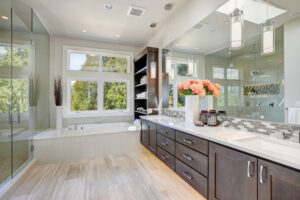
Are you looking to upgrade your kitchen but unsure where to start? One of the top changes you can make is choosing the right windows. Kitchen awning windows might just be the perfect solution you’re looking for.
These windows aren’t just about aesthetics—they’re about enhancing functionality, ventilation, and the overall feel of your kitchen. But what exactly are kitchen awning windows, and why are they such a popular choice for homeowners?
In this comprehensive guide, we’ll dive deep into everything you need to know about kitchen awning windows. From understanding what makes them unique to exploring the various styles, sizes, and benefits, we’ll cover it all. Plus, we’ll walk you through the DIY installation process and offer tips on how to choose the best option for your home.
If you’re ready to transform your kitchen, read on to discover why kitchen awning windows might be the upgrade you didn’t know you needed.
Kitchen awning windows are hinged at the top and open outward, creating an awning-like effect that gives them their name. This design allows the window to remain open even during light rain, making it an excellent choice for kitchens where ventilation is a priority.
These windows are typically operated with a crank handle, which makes them easy to open and close, even in hard-to-reach places like above the kitchen sink.
Kitchen awning windows offer several benefits that make them an ideal choice for many homeowners. Here’s why you should consider installing them in your kitchen:
One of the primary reasons homeowners choose awning windows for their kitchen is the superior ventilation they provide. Because they open outward from the top, these windows can be left open even during light rain, allowing fresh air to circulate without letting water in. This feature is particularly beneficial in kitchens, where cooking often generates heat and odors that need to be vented outside.
Awning windows are typically wider than they are tall, allowing for a broad view of the outside and letting in plenty of natural light. This can make your kitchen feel brighter and more inviting, while also reducing the need for artificial lighting during the day.
Awning windows are a space-efficient choice for kitchens, particularly when installed above the sink or countertops. Their outward-opening design means they don’t take up any interior space, and they can be placed higher on the wall than other types of windows, making the most of your kitchen layout.
With their clean lines and versatile design, awning windows can complement a variety of kitchen styles. Whether your kitchen has a modern, traditional, or rustic design, there’s an awning window style that will enhance the overall look of your space.
The unique design of awning windows means they can be left open during rain, providing continuous ventilation while keeping the rain out. This makes them particularly useful in climates that have more unpredictable weather.
Kitchen awning windows are generally smaller and placed higher up on the wall, which makes them more secure than other types of awning windows. Additionally, the design of the window means that it’s difficult for intruders to open from the outside when locked.
When selecting an awning window for your kitchen, consider the following factors to ensure you choose the best option for your space:
Awning windows are available in various materials, including wood, vinyl, aluminum, and fiberglass. Each material has its pros and cons:
The size of your awning window will depend on where you plan to install it. Above the sink, a smaller window might be more appropriate, while larger windows work well when you want to maximize light and ventilation.
Consider double or triple glazing for improved energy efficiency. Glazing options can also include low-E coatings, which help to reflect heat back into the room during the winter and keep it out during the summer.
The hardware and finishes on your awning window can add to the overall aesthetic of your kitchen. Choose finishes that complement your kitchen’s design, whether that’s a sleek, modern look or something more traditional.
If your kitchen has specific design needs, consider custom awning windows. Customization options include unique sizes, shapes, and finishes to perfectly match your kitchen’s layout and style.
Installing kitchen awning windows can be a complex process, particularly if you’re replacing an existing window. Here’s a general overview of what to expect:
Once you’ve decided on the style, material, and size, it’s time to buy the window. You have a few options to consider:
If you’re not comfortable with DIY installations, hiring a professional is recommended. They can ensure the window is installed correctly, which is crucial for both performance and warranty purposes.
To keep your kitchen awning windows in top condition, regular maintenance is essential:
Kitchen awning windows are a versatile, stylish, and practical choice for any home. Their ability to provide excellent ventilation, natural light, and weather protection makes them ideal for kitchens.
Whether you’re renovating your kitchen or building a new one, consider the benefits of awning windows to enhance both the functionality and aesthetics of your space.
At OpenUp Windows, we offer a wide range of kitchen awning windows that are designed to fit your specific needs. With options for customization and professional installation services, we ensure that your new windows not only meet but exceed your expectations.
Schedule a free consultation today to explore our kitchen awning window options and discover how we can help you create the kitchen of your dreams.
Our team of experts is here to guide you through every step of the process, from selection to installation, ensuring a smooth and successful project.
Save 5% on your Order this Fall
Your discount will be applied automatically when you place your order before end of November 2025